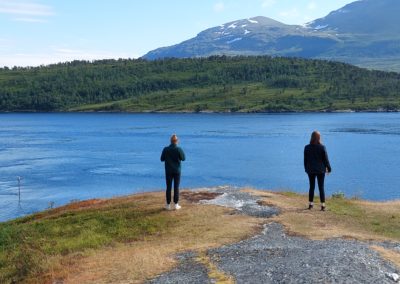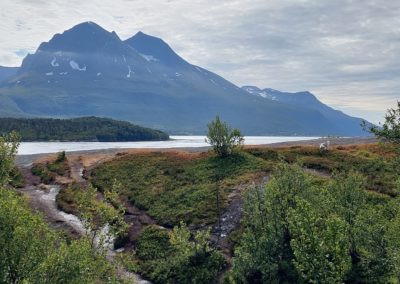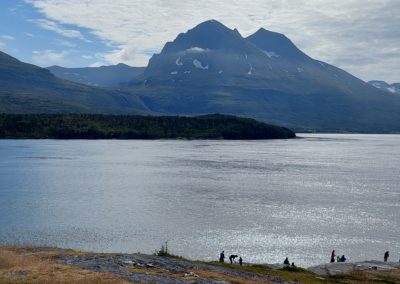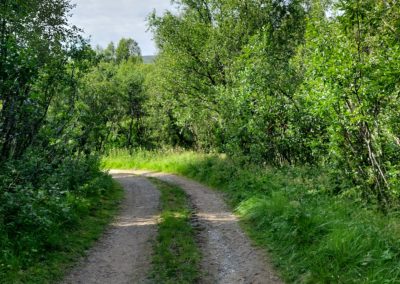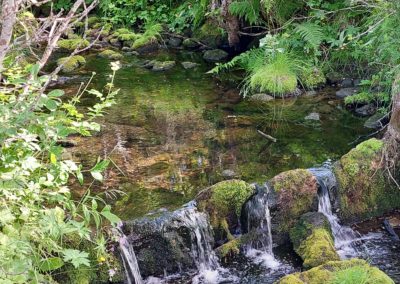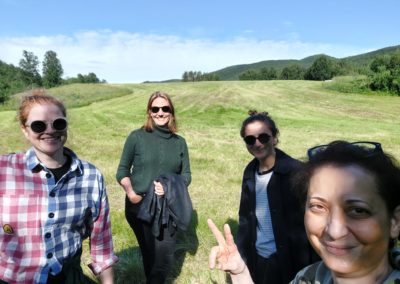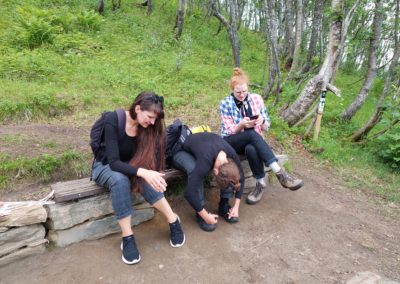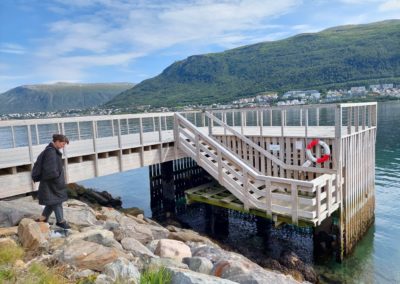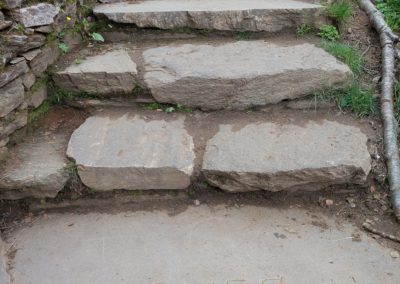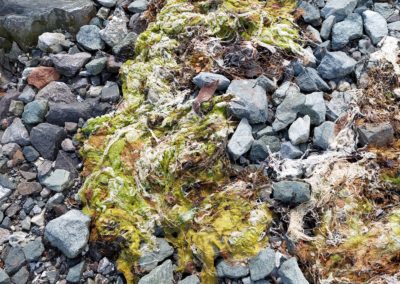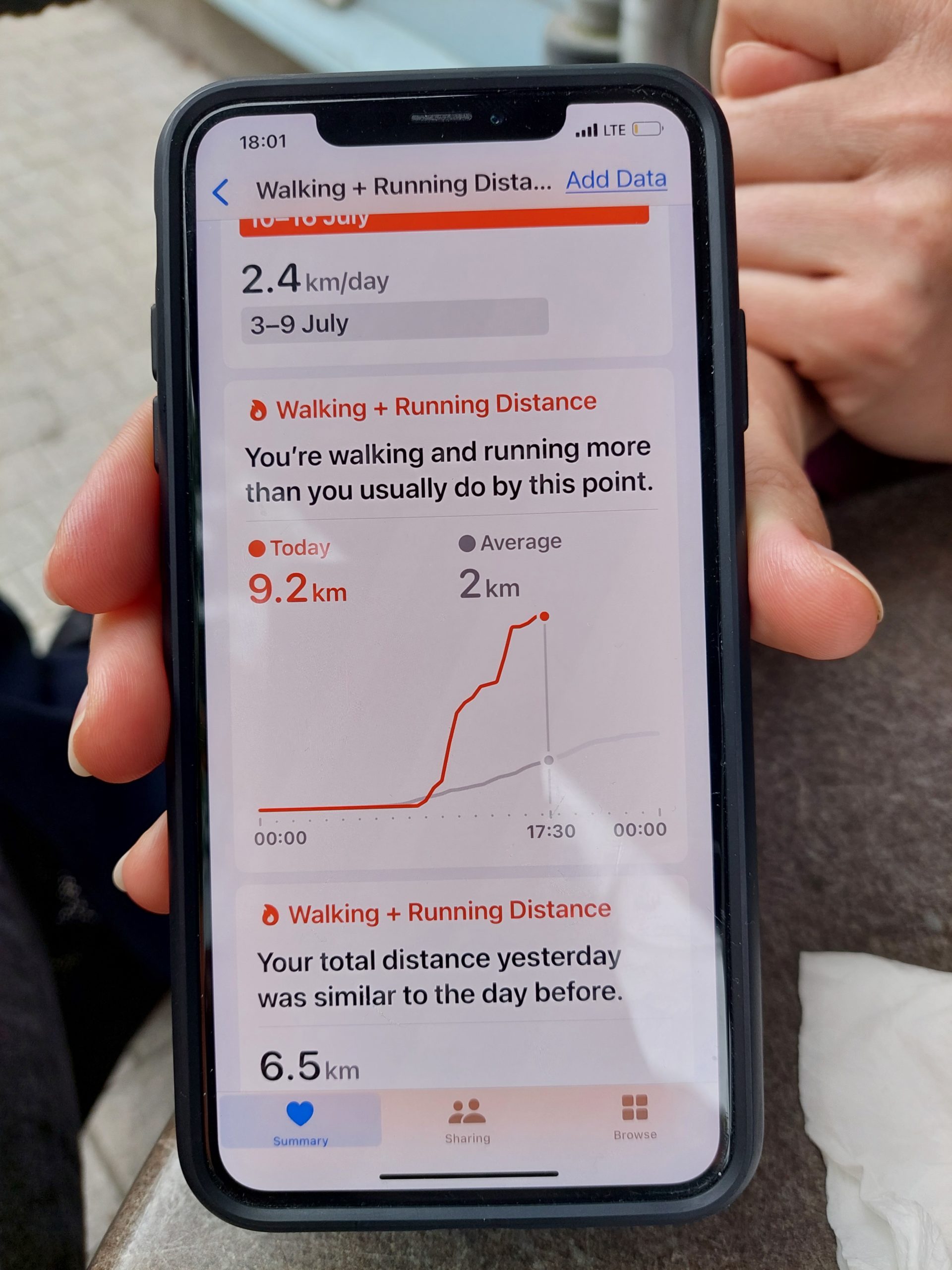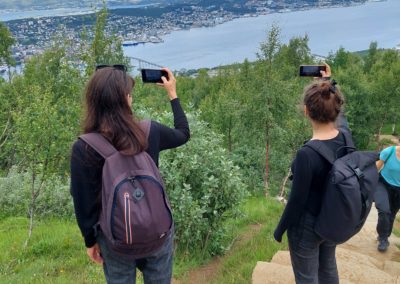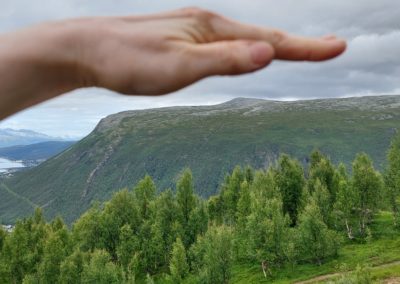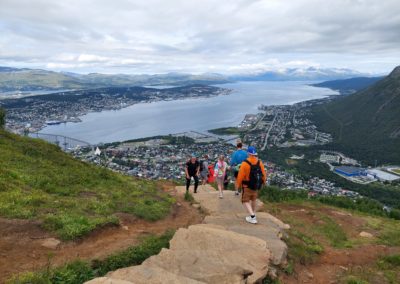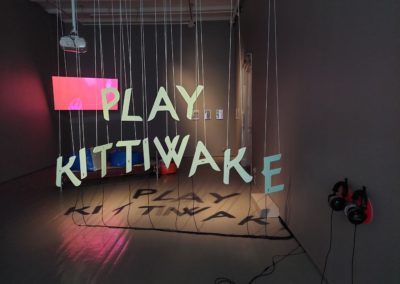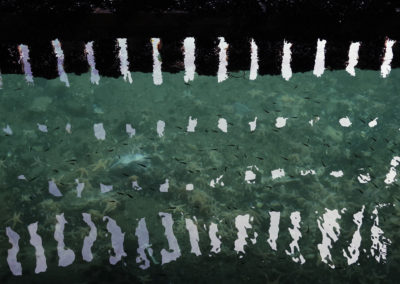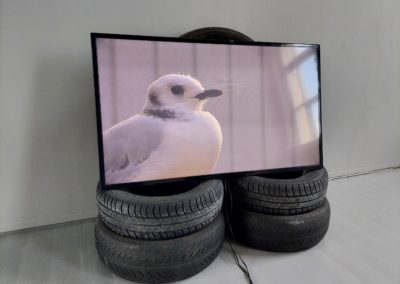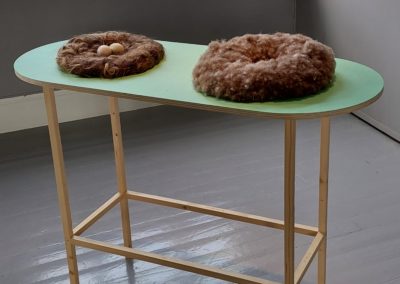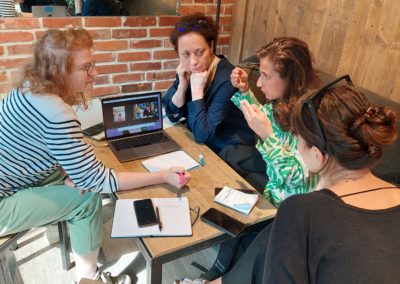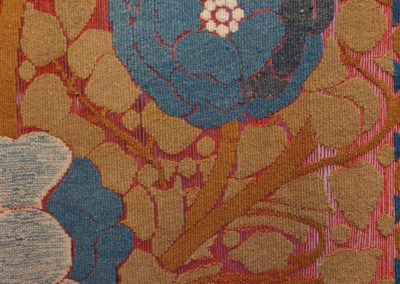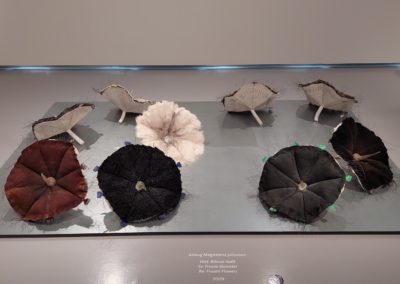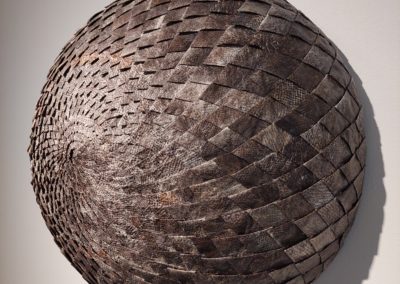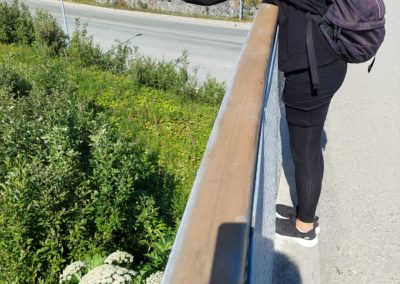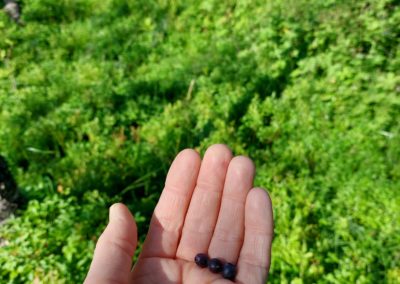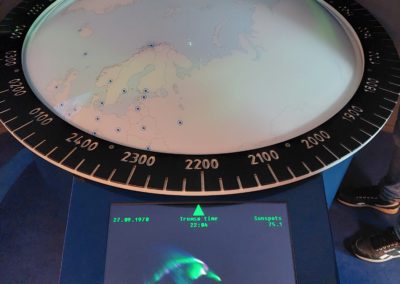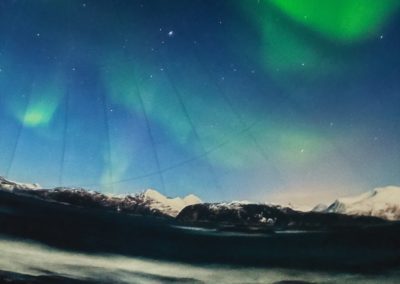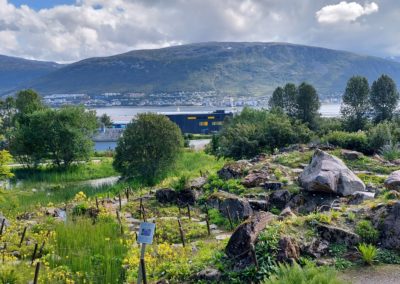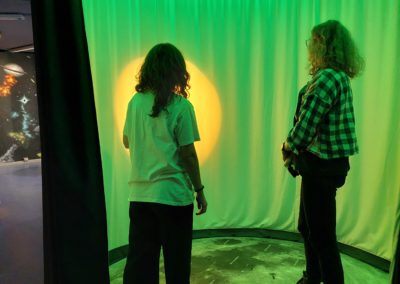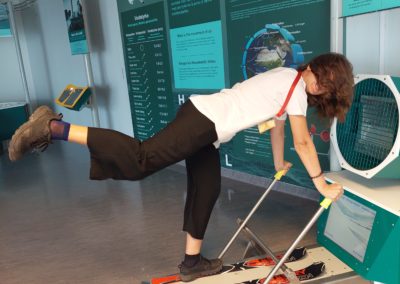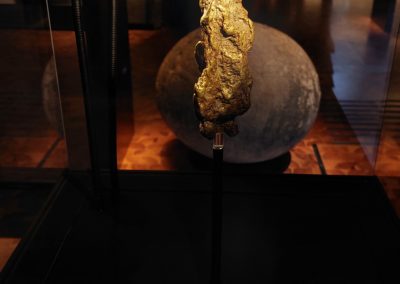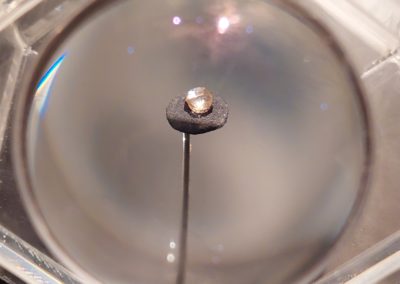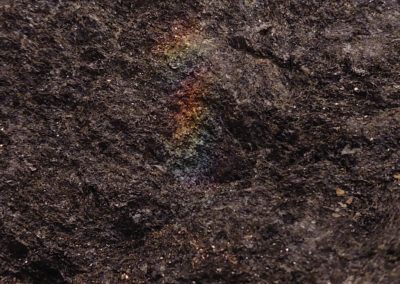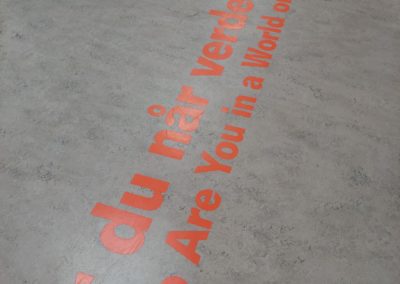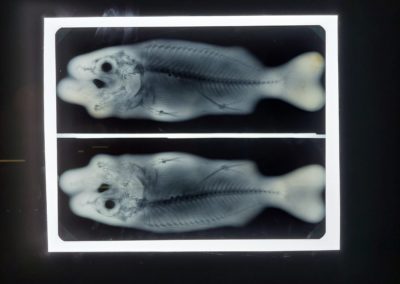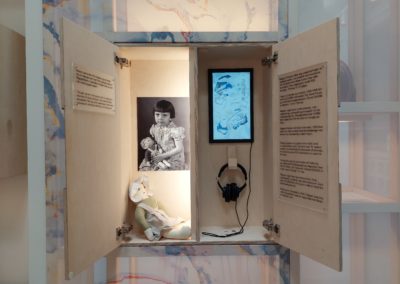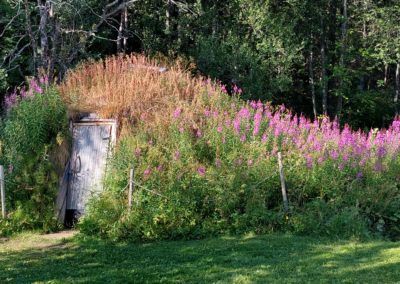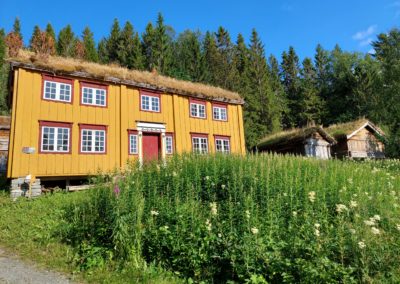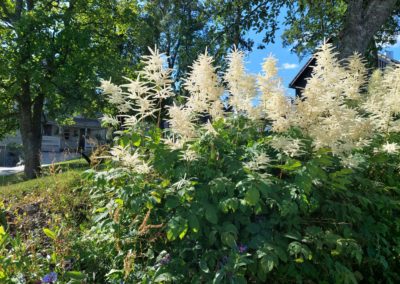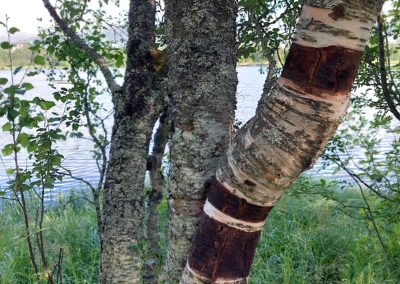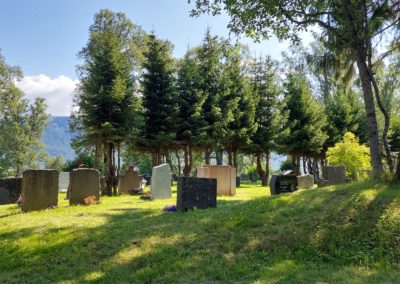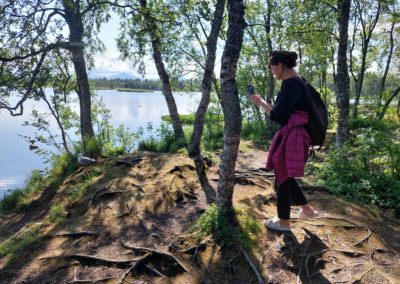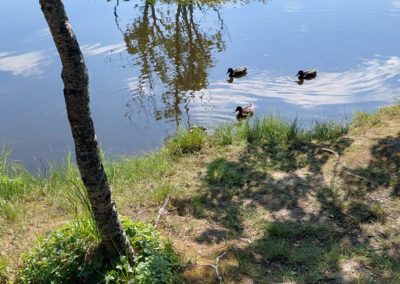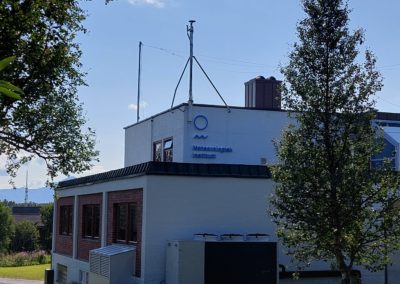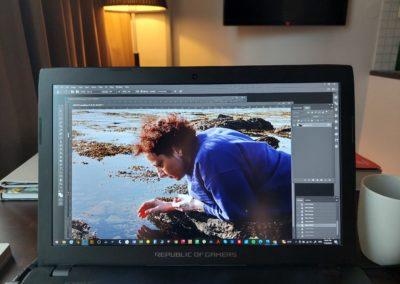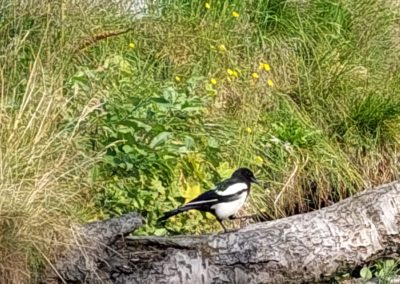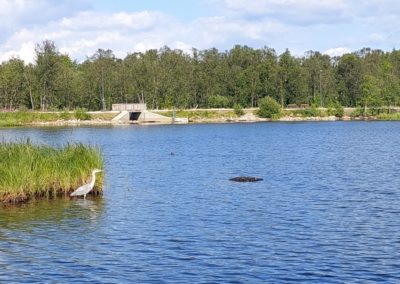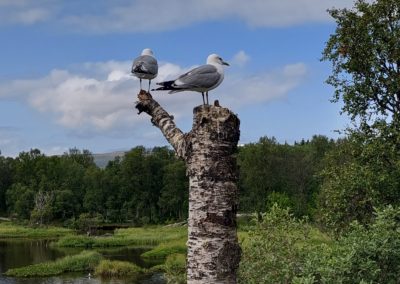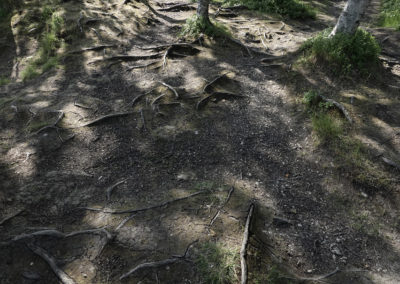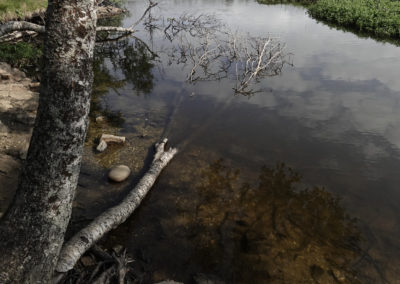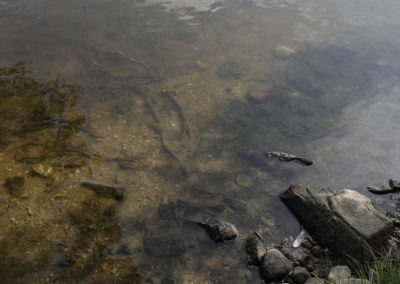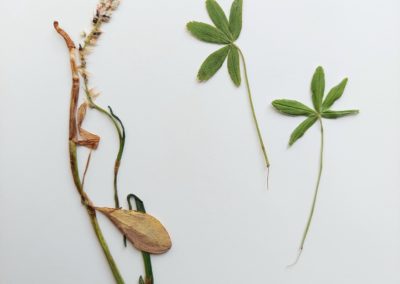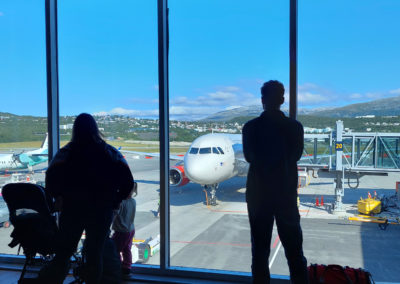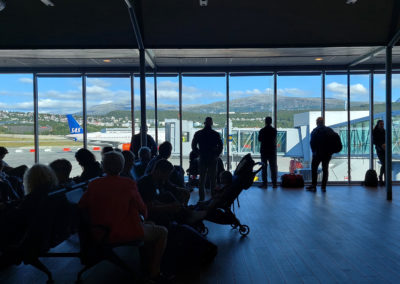Aurora Király
Travel Journal

Biography
Aurora Király works mainly with photographic images, creating complex connections between the private and public spheres. At the intersection of photography with textile art, drawing and installation, the artist explores how the mind records, relives and accesses the mechanisms of memory. Aurora Király is particularly interested in exploring feminist theories of identity creation and the status of women in society. The artist teaches at the University of Arts in Bucharest and is known for her role in sustaining and reshaping the cultural art scene in Bucharest as artistic director of Galeria Nouă (2001 – 2012). Her works are part of public and private collections, presented in the following selected exhibitions: After twelve years. Artistic production in Romania in 180 works (National Museum of Contemporary Art, RO, 2020 – 2021); The Show That Never Was (Anca Poterașu Gallery, RO, 2021); Corsete then and now (Zina Gallery, RO, 2021); 4 | 14 | 26 degrees east (Anca Poterașu Gallery and lítost, BE, 2020); In Midst of the Worst, the Best of Times (SUMO – The Odd year at lítost Prague, CZ, 2020); A Room of Her Own, (NADA Gallery Open NY Harlem CT Collective, US, 2020); In the Midst of the Storm (Anca Poterașu Gallery, RO, 2019); Ex-East. Past and recent stories of the Romanian avant-gardes (Espace Niemeyer, Paris, FR, 2019); Din unghiuri diferite (The National Museum of Contemporary Art, RO, 2018); Woman, All Too Woman – a 3rd edition of Baroc Urban (Art Museum, Timișoara RO, 2018); Orient – Trauma & Revival: Contemporary Encounters (Kim? Laikmetīgās mākslas centrs, Riga / BOZAR Centre for Contemporary Art, Brussels/ Gallery Sztuki Współczesnej Bunkier Sztuki, Kraków, 2018); Conjunctions (solo – show, Spinnerei Leipzig Project Space, DE, 2018); Constructed Geometries. Space / Time / Memory (solo – show, Anca Poterașu Gallery, RO, 2017); Life – way of use (Art Encounters Contemporary Art Biennial, RO, 2017); Reality Check (solo – show Calina Gallery, Timișoara RO, 2016); Ex Future (Arcub Gabroveni, RO, 2016); Our History about the Others. Bucharest – A city seen through four lenses (White Night of Galleries #10 at Scena9 RO, 2016); Girls with Ideas [Boys and Paintings] (Lateral ArtSpace, Paintbrush Factory, Cluj, RO, 2016); Brain Tatoos – A Map of Obssesions, (Romanian Cultural Institute Lisbon, PT, 2016); Cut & Paste Histories (Alert Studio, Bucharest, RO, 2015); WHAT ABOUT Y[OUR] MEMORY (The National Museum of Contemporary Art, RO, 2014); Good Girls – On Memory, Desire, Power (The National Museum of Contemporary Art, Bucharest, RO, 2013); Duet ( Fortress Gallery, Târgu Mureș, RO, 2003); Feminine Archaeology (International Centre of Contemporary Art Bucharest, RO, 2000); Melancolia (Sindan Cultural Centre, Cluj, RO, 2000); Melancolia (GAD Photogallery, Bucharest, RO, 2000); Untitled (International Centre of Contemporary Art Bucharest, RO, 1999).
Photo credit: Nicu Ilfoveanu
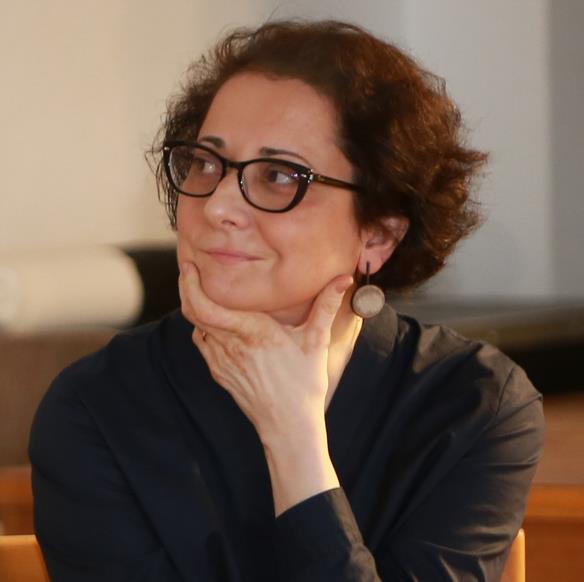
Residency
20 – 28 July
Norway, Tromso
The days in Tromso were very intense and busy. First of all, I had never been so far north before. The fact that we made this visit in July meant that my colleagues and I got to experience the midnight sun, the natural phenomenon that occurs in summer in places south of the Antarctic Circle and north of the Arctic Circle – including northern Norway. The nature research walks were very important to understand a the context, the setting in which the locals live, to see the nature, the relief, the fjords and the extraordinary bays along the coast of Tromsø. In addition to these research hikes, we visited some of the existing institutions in the city. On the one hand art institutions (art centre, art museum), but also institutions that could provide us the scientific support for the Blue Sun research project (scientific museums).
20 July
Just after my arrival on Tromsø Airport I was picked-up by the curator Anja Lückenkemper and artist colleague Larisa Crunțeanu and went on a trip by car, to explore the nature along the fjord. Thanks to Inga Bårdsen Tøllefsen, research fellow at the Department of History and Religious Studies, UiT, The Arctic University of Norway, Tromsø, who was so generous to give as a guided tour in the area, we had a fantastic research trip.
The first stop was at Tromsø villmarkssenter, a shelter for Husky dogs. It is owened by one of the biggest adventure companies in Norway, located on Kvaløya (the whale island) 25 minutes from Tromsø. They have aprox. 200 Alaskan huskies and offer dog sledding trips and northern lights tours in the winter and in the summer they focus on puppy training and husky hikes.
The next stop was at Straumhella, about 30 km outside the centre of Tromsø. There is a popular summer destination for locals and tourists. Hella resort is currently owned by Tromsø municipality. She told us the history of the place, as in the 1950s, Tromsø Labour Association bought up land at Straumhella, and later several buildings from “Old Tromsø” that were threatened with demolition were moved to the site so that they could be preserved for future generations. The houses are located in a street called “Tromsøgata“, which we visited in our way to the beautiful panorama from Straumhella. The last part of our trip was in Straumsbukta, where we did a long walk along the beach and visited some farms and meadows in the area, as our host was born and still has her family farming there. It was amazing and so energizing to discover these places!
On our way back to Tromsø we stopped at a local grocery Eine Handel Norway, recommended by Inga as a local store which focus on local food and fresh ingredients. It is an example of success small bussineses founded on the 50s, which now is at the 4th generation and is in continous expansion.
21 July
Inga Bårdsen Tøllefsen recommended us to hike to Sherpatrappa in Tromsø, which we did. I cannot forget the crossing on the very long Tromsø Bridge with a vibrating structure that we walked from one side of the city to the mountain we were going to explore and back. “The Sherpa steps” are a very popular attraction for the local population. As I am not trained in hiking, I admit that it was a huge effort, especially the first half of the way. The Tromsø Sherpa Ladder follows the route of the Aksla Trail, which zigzags up the corner of the mountain where Tromsdalen meets Tromsøysundet. The ladder was built by Nepalese mountain road workers. In 2016, 315 steps were built, in 2017 607 steps were built. When completed in 2019, there were 1203 steps. The stone was brought from Skibotn and climbed by helicopter, but local limestone was also used. The purpose of building Sherpatrappa was to minimize erosion and wear of the path and to take better care of nature and vegetation.
The physical challenge was rewarded on top by a wonderful panorama, and various local flora discoveries. I did several photographs and checked various plants for the project. On the way down, we stopped at the Arctic Cathedral. The church was designed by architect Jan Inge Hovig and is built mainly of concrete. The church is one of the most notable churches in Tromsø due to its design.
22 July
Anja had the initiative to experiencing a sound walk along the coast. We started in the western part of the island, in the harbour area, but also crossing on various modern apartments districts built along the beach. The background noise was always mixed with the cries of the seagulls and of the waves, from time to time. The aspect that I really liked about Tromsø was how close it was to be in nature or enjoy different natural elements while being in the city at the same time. For example, along the sound tour, we explored the beach, seaweed and rocks of countless types, shells. Under the structure of one of the decks I discovered hundreds of starfish and sea urchins, truly impressive.
I followed the site-specific plants, but also discovered adapted invasive plants such as the huge giant hogweed (Heracleum mantegazzianum). I visited together with Anetta Mona Chissa the exhibition I …. Seagulls! at Tromsø Kunstforening / Romssa Dáiddasiida. An exhibition about living together – an assembly of observations, interactions, dreams and fantasies where the artists investigate the past, the present and possible future.
I enjoyed very much the spaced of the art center, an old traditional wooden house, the exhibition, but also the book-shop and the tea I had at the end of the visit. Tromsø Kunstforening is the oldest art institution in Northern Norway and is still a vital space for contemporary art in the region. The installation in front of the building was impressive, with a structure specifically designed by Lawrence Malstaf, AT Arkitektur / Kjeld Nash to be inhabited by kittiwakes. I had a walk along the cliff until late evening, taking advantage of the midnight sun.
23 July
Busy morning working session with Anja Lückenkemper, Anetta Mona Chisa Larisa Crunțeanu, Iulian Bisericaru and by Zoom with Anca Poterașu. Discussing and negociating and about the project, the works and the exhibition. In the afternoon I went together with Anetta Mona Chisa to the Nord Norsk Kunst Museum to visit 2 exhibitions: “28%” presents women in the collection born before 1913 (when women obtained the vote in Norway) and Gába (Female Resilience) which shows works by sámi and northerners artists.
Among the works which I liked are: a wonderful tapestry by Nina Hansen (the Blue Rose, 1898), the installation of Aslaug Magdalena Juliussen – Re: Frozen Flowers and Solveigs Ovanger – Hemisphere.
24 July
Wonderful weather allowing us to visit Tromsø Arctic-Alpine Botanical Garden and to check a variety of plants and flowers. I walked there together with my colleague enjoying the neighbourhood, the wooden cottages and villas, the flora and invasive plants. The weather was great and the light so strong. At the botanical garden I did several photographs and I also staged one for the project, which I captured with the help of Anetta. The way to the Northern Norway Science Centre was through a forrest and a cranberry field – amazing! We went to the Northern Norway Science Centre to see a documentary on the Aurora Borealis at the Planetarium together with all my colleagues from the Blue Sun project.
After the documentary we enjoyed various kinds of scientific educational devices and last but not least, I was able to check how the Aurora Borealis was like on the date of my birth.
25 July
The complete exhibition tour of the Arctic University Museum of Norway, visiting the permanent and temporary exhibitions, enjoying the wonderful display with multimedia interactive elements for a better understanding. Among the temporary exhibition I found one “Who Are You in a World of Fire?”, about the Norwegians in the World War II, with a very interesting concept and display.
Walk along the island’s western coast, enjoying the rocks, algae, flora, the most diverse colours, structures and textures, you cannot stop to look, breath, touch, smell. Visit of the Mini Skansen and open-air museum in Folkeparken in Tromso, Norway.
26 July
Walk around Prestvannet Lake, amazing nature, with a variety of plants and birds, taking documentary photographs but also trying to complete my ideas for the project. Analising the photographs done during the previous days, making notes.
27 July
Another visit at Prestvannet Lake. Working mood, analising and working on the photographs done during the previous days, making notes.
The project “Blue Sun – Conversation on art, science, and ecology” benefits from a 93960 Euro grant from Iceland, Liechtenstein and Norway through the EEA and Norway Grants.
The EEA and Norway Grants represent the contribution of Iceland, Liechtenstein and Norway towards a green, competitive and inclusive Europe. There are two overall objectives: reduction of economic and social disparities in Europe, and to
strengthen bilateral relations between the donor countries and 15 EU countries in Central and Southern Europe and the Baltics. The three donor countries cooperate closely with the EU through the Agreement on the European Economic Area (EEA). The donors have provided €3.3 billion through consecutive grant schemes between 1994 and 2014. For the period 2014-2021, the EEA and Norway Grants amount to €2.8 billion. More details are available on: www.eeagrants.org and www.eeagrants.ro


